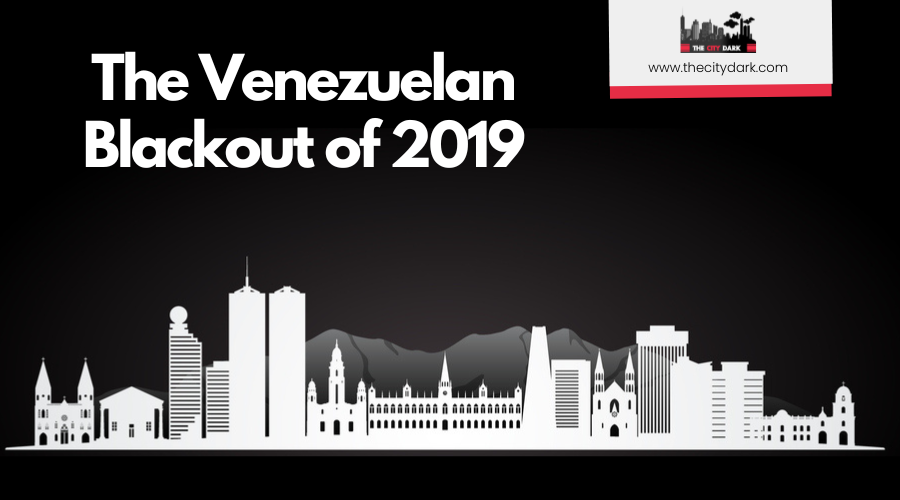India Blackout of 2001
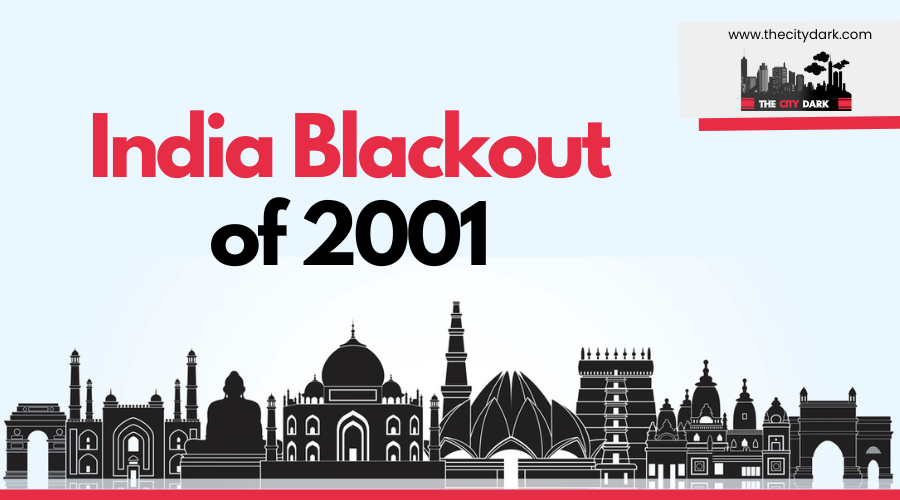
On January 2, 2001, Northern India experienced a massive blackout affecting 230 million people. This was not a mere inconvenience; it halted transportation with over 80 trains stranded and strained hospitals relying on backup generators. The outage was traced to a substation failure in Uttar Pradesh, highlighting significant vulnerabilities in India's power infrastructure. How could such a large-scale failure occur, and what did it reveal about the nation's preparedness and response mechanisms?
Extent of the Blackout
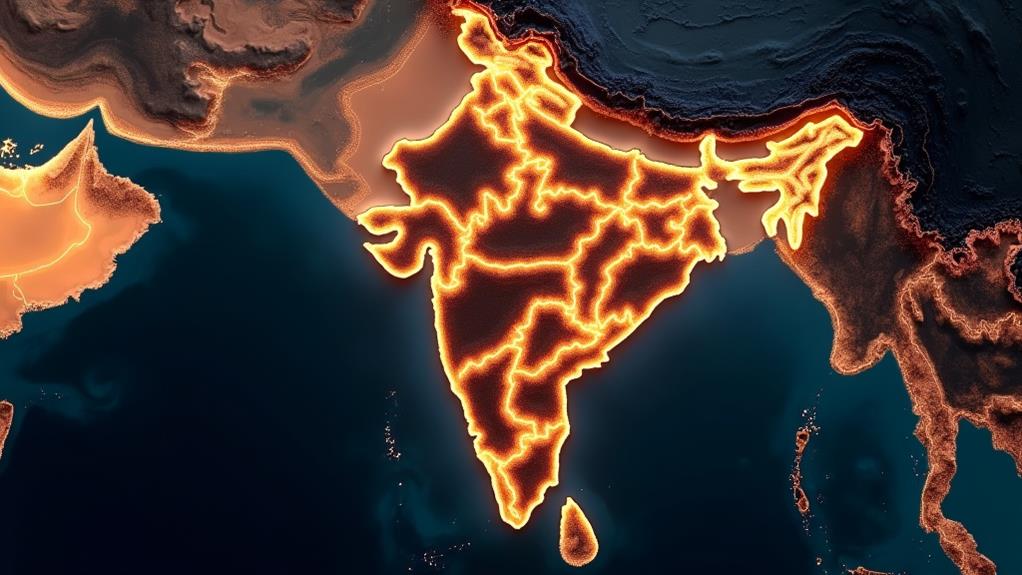
On January 2, 2001, a massive blackout plunged approximately 230 million people—nearly a quarter of India's population—into darkness. This extensive power outage primarily affected Northern India, including major states like Uttar Pradesh, Jammu and Kashmir, Punjab, Haryana, Himachal Pradesh, Rajasthan, and the Union Territory of Chandigarh. New Delhi, the nation's capital, also faced significant disruptions.
The blackout originated from a failure at a substation in Uttar Pradesh, triggering a collapse of the northern power grid. This failure severely disrupted the electricity supply, leaving millions without power for about 12 hours. Full restoration of electricity took between 16 to 20 hours in multiple regions.
During this time, over 80 trains were stranded, causing chaos for commuters and halting transportation. Daily life came to a standstill, and economic activities across the affected areas suffered greatly. Businesses, hospitals, and homes all felt the impact of the sudden power outage.
Efforts for restoration were swift, yet the scale of the blackout highlighted the vulnerability of the region's power infrastructure. The incident underscored the essential need for improvements in the electricity supply system to prevent future occurrences of this magnitude.
Causes of the Blackout
The blackout on January 2, 2001, originated from a failure at a crucial substation in Uttar Pradesh, which triggered a cascade effect across the northern grid. States exceeding their power allocations led to severe grid overloading, with the frequency reaching 50.46 Hz, surpassing the safe operational range. Outdated transmission equipment further exacerbated the situation, culminating in a widespread power outage.
Northern Grid Failure Details
On January 2, 2001, a substation collapse in Uttar Pradesh triggered a major failure of the northern grid, leaving around 230 million people without power. This incident exposed significant vulnerabilities in the region's power infrastructure, stemming from several critical factors.
First, the transmission equipment was antiquated and inadequate, unable to handle voltage fluctuations and the rising electricity demand. The outdated gear was overwhelmed.
Second, multiple states overdrew electricity beyond their allocated limits, creating a dangerous imbalance between supply and demand. This overdraw stressed the northern grid, pushing it to the brink of failure.
Third, years of underinvestment had left the power infrastructure in a vulnerable state. Inadequate maintenance and improvements meant the system was ill-prepared for peak loads and emergencies.
- Antiquated transmission equipment: Unable to manage voltage fluctuations.
- Overdrawing of electricity: States took more power than allocated.
- Underinvestment in infrastructure: Years of neglect left the grid fragile.
These factors created a perfect storm, leading to one of India's most significant power outages. The blackout underscored the urgent need for systemic upgrades and better management of the country's power resources.
Power Diversion Efforts
The failure of the Northern Grid not only exposed infrastructural weaknesses but also revealed the desperate power diversion efforts that ensued. When a substation failure in Uttar Pradesh triggered the massive power outage, authorities scrambled to mitigate the grid collapse by redirecting power from the eastern and western grids and even seeking assistance from Bhutan. This patchwork response highlighted the fragility of India's transmission system.
At the time of the grid collapse, the frequency had reached 50.46 Hz, surpassing the normal range of 48.5-50.2 Hz. This high frequency indicated an imbalance and overloading, as states were consuming more power than allocated. Despite their good intentions, the frantic power diversion efforts failed to stabilize the grid, underscoring the urgent need for better management in the power sector.
Recognizing these shortcomings, the Indian government announced an inquiry into the blackout's causes. This investigation aimed to understand the vulnerabilities in the transmission system and to advocate for reforms in the power sector. Enhanced management and infrastructure upgrades were deemed essential to prevent future blackouts and ensure a more resilient power grid for the country.
Grid Overloading Issues
Grid overloading was a pivotal factor in the blackout on January 2, 2001, which affected 230 million people across northern India. Several states exceeded their power allocation, leading to grid failure. The northern grid's frequency dropped to 49.20 Hz, signaling severe overloading. This excessive demand highlighted the vulnerabilities in the aging transmission infrastructure, particularly when a substation in Uttar Pradesh failed, acting as the final trigger.
Poor coordination among states and inadequate monitoring tools worsened the situation. The grid's inability to manage sudden spikes in electricity demand, coupled with outdated transmission equipment, resulted in widespread outages. Investigations identified several critical issues:

- Grid failure due to overloading: Excessive power draw by multiple states led to a significant drop in grid frequency.
- Aging transmission infrastructure: The failure of a substation in Uttar Pradesh underscored the system's fragility.
- Inadequate monitoring: Poor coordination and insufficient monitoring tools allowed the overdrawn power situation to escalate unchecked.
Addressing these challenges necessitates modernizing the transmission infrastructure and enhancing coordination and monitoring across states. Doing so can significantly reduce the risk of future blackouts, ensuring a more stable power supply for millions.
Immediate Impact
When the blackout hit northern India on January 2, 2001, it plunged approximately 226 million people into darkness for about 12 hours, causing immediate and extensive disruptions. Hospitals struggled immensely, relying on backup generators to maintain critical functions. Major surgeries and essential procedures were canceled, adding to the already stressful situation for medical staff and patients. Over 80 trains were stranded for up to 15 hours, leading to widespread disruption in rail transport across the affected regions.
In New Delhi, failed traffic signals created chaos on the roads, resulting in severe congestion. This traffic mess further complicated emergency response efforts, as ambulances and other emergency vehicles found it challenging to navigate through the gridlock. Airline operations were also affected; computer failures disrupted reservations, although Delhi airport managed to keep running by using standby generators.
The blackout's immediate impact was felt in every aspect of daily life, highlighting the vulnerabilities in the region's infrastructure. From hospitals and trains to traffic signals and emergency response, the disruptions were a stark reminder of how reliant modern society is on a stable power supply.
Business and Economic Reactions
Business leaders expressed significant frustration following the January 2, 2001 blackout, calling for urgent reforms in the power sector. The Confederation of Indian Industry (CII) highlighted the widening gap between electricity demand and supply, urging immediate improvements in coal supplies and state distribution utilities. With economic losses estimated at INR 5 billion, the blackout underscored the critical need for systemic changes and substantial investment in power infrastructure.
Power Sector Reforms
The January 2, 2001 blackout, which left approximately 230 million people without power, highlighted the critical shortcomings of India's electricity supply infrastructure. Business leaders, particularly from the Confederation of Indian Industry (CII), expressed significant frustration and emphasized the urgent need for power sector reforms. They pointed out the widening gap between electricity demand and supply, stressing the necessity of systemic changes to support India's burgeoning economy.
Key areas identified for immediate reform included:
- Thermal Plants: Ensuring a reliable coal supply to maintain consistent operations.
- Distribution Utilities: Overhauling state-run entities to enhance efficiency and minimize losses.
- Private Investment: Promoting private sector participation to bolster infrastructure and service reliability.
The blackout's financial impact, estimated at INR 5 billion (approximately $107 million), underscored the severe economic repercussions of power outages. Business groups advocated for the privatization of the electricity sector, believing that private investment could drive critical improvements in infrastructure and service reliability. Addressing these core issues aimed to establish a more stable power supply, which is vital for India's economic growth and stability.
Economic Disruptions Noted
The 2001 blackout underscored the urgent need for power sector reforms while also highlighting the significant economic disruptions caused by such outages. Business losses were estimated between 2.5 and 5.0 billion rupees (approximately $107.1 million), reflecting the severe economic impact. Business leaders expressed their frustration and called for systemic changes to prevent future disruptions.
The Confederation of Indian Industry (CII) pointed out the critical gap between electricity demand and supply, advocating for immediate reforms in power distribution. Public dissatisfaction grew as electricity tariffs climbed without a corresponding improvement in power reliability. This situation underscored the lack of accountability in government infrastructure investment and highlighted historical underinvestment in the power sector.
| Aspect | Details |
|---|---|
| Business Losses | 2.5-5.0 billion rupees (~$107.1 million) |
| Calls for Change | Business leaders demanded systemic changes |
| CII's Emphasis | Urgent power distribution reforms needed |
| Public Sentiment | Dissatisfaction due to high tariffs, poor reliability |
The blackout served as a stark reminder that India's power sector had not kept pace with its economic growth since the 1990s. Without addressing these systemic issues, future power outages could further jeopardize economic stability.
Urgent Policy Changes
Business leaders expressed significant frustration over the January 2, 2001 blackout, viewing it as a critical indicator of the urgent need for reforms in India's power sector. The Confederation of Indian Industry (CII) underscored the widening gap between electricity demand and supply, advocating for immediate policy changes to address systemic issues in power distribution networks. The power crisis highlighted the necessity for improved coal supply to thermal plants and reforms in state distribution utilities to enhance reliability.
The financial impact of the blackout was severe, with estimated economic losses reaching up to INR 5 billion. This underscored the critical repercussions of power outages on businesses, spurring calls for urgent reforms. Business groups began advocating for the privatization of the electricity sector to foster more efficient management and attract infrastructure investment.
Key areas for urgent reforms included:
- Enhancing coal supply for thermal power plants to ensure consistent energy production.
- Reforming state distribution utilities to improve the reliability and efficiency of the power supply.
- Encouraging privatization to introduce better management practices and attract necessary investments.
Historical Context
During India's rapid economic growth in the late 20th and early 21st centuries, the nation's power infrastructure struggled to meet rising energy demands. This struggle became acutely evident on January 2, 2001, when a major blackout plunged northern India into darkness. The failure of a substation in Uttar Pradesh triggered this power outage, which affected approximately 230 million people, marking it as one of the largest blackouts in history.
The blackout's impact extended far beyond Uttar Pradesh, causing significant disruptions across multiple states, including Delhi, Punjab, and Haryana. The incident highlighted systemic issues within India's power infrastructure, such as inadequate transmission equipment and years of underinvestment. Restoration efforts took between 16 to 20 hours to fully resolve the situation, leaving millions without electricity for nearly half a day.
In the aftermath, the government launched high-level inquiries and initiated discussions on the need for reforms. The 2001 blackout served as a critical wake-up call, emphasizing the urgent need for better management and substantial improvements in the country's electricity supply system.
Power Grid Failures
India's 2001 blackout exposed the nation's vulnerability to power grid failures, revealing systemic flaws in the infrastructure. The collapse of a substation in Uttar Pradesh triggered a massive blackout, affecting about 230 million people across northern India. The outage, which lasted roughly 12 hours, stranded over 80 trains and disrupted essential services like hospitals and water supply systems.
The primary cause was outdated and inadequate transmission equipment, compounded by poor infrastructure management. These issues led to severe voltage fluctuations that the system couldn't handle. The aftermath revealed significant gaps in coordination and monitoring within India's power distribution system. States were drawing more power than allocated, further straining the already fragile grid.
The economic loss was staggering, estimated at up to INR 5 billion due to halted businesses and transportation. This blackout highlighted the urgent need for improved infrastructure and better management practices.
Key issues contributing to the power grid failure included:
- Outdated transmission equipment: Unable to handle modern demands.
- Poor infrastructure management: Lack of maintenance and upgrades.
- Power distribution issues: States drawing more power than allocated.
The 2001 blackout served as a wake-up call, emphasizing the urgent need for systemic reforms.
Recovery Efforts
The January 2, 2001 blackout left engineers and emergency crews urgently working to restore power to 226 million people. Teams operated around the clock, successfully bringing power back within 12 to 20 hours.
Hospitals faced critical challenges, heavily relying on backup generators to maintain vital services. Major surgeries were canceled, creating a backlog and adding pressure on healthcare providers. The blackout severely impacted rail transport, with over 80 trains stranded for up to 15 hours. Diesel engines were used in emergency rescues to clear the tracks and ensure passenger safety.
Urban centers experienced massive traffic congestion due to signal failures, making navigation a test of patience and ingenuity. The government's recovery efforts quickly focused on enhancing the resilience of the power infrastructure to prevent future blackouts. A government inquiry emphasized the need for substantial investment and systemic reforms to fortify the power grid and modernize essential services. These recovery efforts highlighted the critical need for robust infrastructure and proactive planning.
Government Response
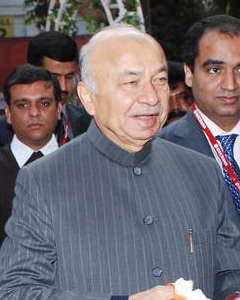
Following the January 2, 2001, blackout, the Indian government swiftly initiated a high-level inquiry to identify the root causes, which included outdated infrastructure and management failures. Power Minister Sushilkumar Shinde highlighted that states exceeding their power allocations contributed to the crisis, partially diverting responsibility from the central government. To mitigate future risks, the government proposed privatizing transmission and distribution, aiming to improve efficiency and reliability in the power sector.
Inquiry and Accountability Measures
Initiating the inquiry into the massive blackout on January 2, 2001, the Indian government promptly assembled a three-member panel to investigate the crisis. This high-level investigation aimed to identify the root causes and assign accountability for the power failure that affected approximately 230 million people. The panel's findings were revealing, indicating that outdated transmission equipment and years of underinvestment in infrastructure were significant contributors to the blackout.
Power Minister Sushil Kumar Shinde attributed the blackout to states that drew more power than allocated, describing them as "greedy." The inquiry underscored a critical lack of coordination in electricity distribution management, an issue necessitating immediate attention.
Key takeaways from the inquiry included:
- Outdated transmission equipment: Old systems were unable to handle the load, resulting in widespread power failure.
- Underinvestment: Prolonged underfunding left the power infrastructure vulnerable to such crises.
- Systemic reforms: Calls for privatization and improved management practices were prominent in the findings.
Facing mounting pressure, the government began considering extensive reforms to ensure reliability and accountability in the power sector. Immediate actions were deemed necessary to prevent future blackouts and restore public trust.
Restoration Prioritization Strategies
Following the January 2, 2001 blackout, the Indian government swiftly prioritized power restoration to essential services. Efforts were concentrated on reinstating electricity to critical infrastructures such as hospitals, water supply facilities, and transportation systems to ensure their continued operation during the crisis. Emergency response teams were deployed immediately, with a particular focus on hospitals relying on backup generators.
Restoring power to the railways was deemed a priority, and diesel engines were utilized to rescue over 80 stranded trains while electrical services were being restored. The government adopted a phased restoration approach, targeting the return of power to major urban centers and essential services within 12 hours. This strategy ensured that critical services were quickly reactivated, minimizing disruptions to daily life.
Investigations were conducted to assess the blackout's impact and to improve future restoration strategies. These investigations emphasized the need for enhanced infrastructure and better coordination among states to manage future power outages more effectively. By focusing on essential services and critical infrastructure, the government ensured a swift and efficient emergency response during this significant power outage.
Infrastructure Improvement Plans
How did India respond to the massive 2001 blackout? The government promptly launched a $400 billion initiative to overhaul the power grid, aiming to enhance reliability and capacity by 2017. Power Minister Sushilkumar Shinde formed a three-member panel to investigate the blackout's causes and recommend actionable solutions.
The plan targeted several key areas:
- Modernizing transmission infrastructure: Upgrading transmission equipment to manage increased loads and prevent failures.
- Enhancing monitoring tools: Equipping power dispatch centers with advanced monitoring tools for better oversight and quicker response to potential issues.
- Implementing better load management: Coordinating power distribution among states to avoid grid overloading.
Discussions also focused on transitioning to a smart grid system. By adopting innovative technologies, India aimed to improve power reliability and prevent blackouts. The government emphasized infrastructure improvement to reduce the likelihood of large-scale outages.
These strategic investments and upgrades laid the foundation for a more resilient and efficient power grid, capable of meeting the nation's growing demands.
Long-Term Solutions
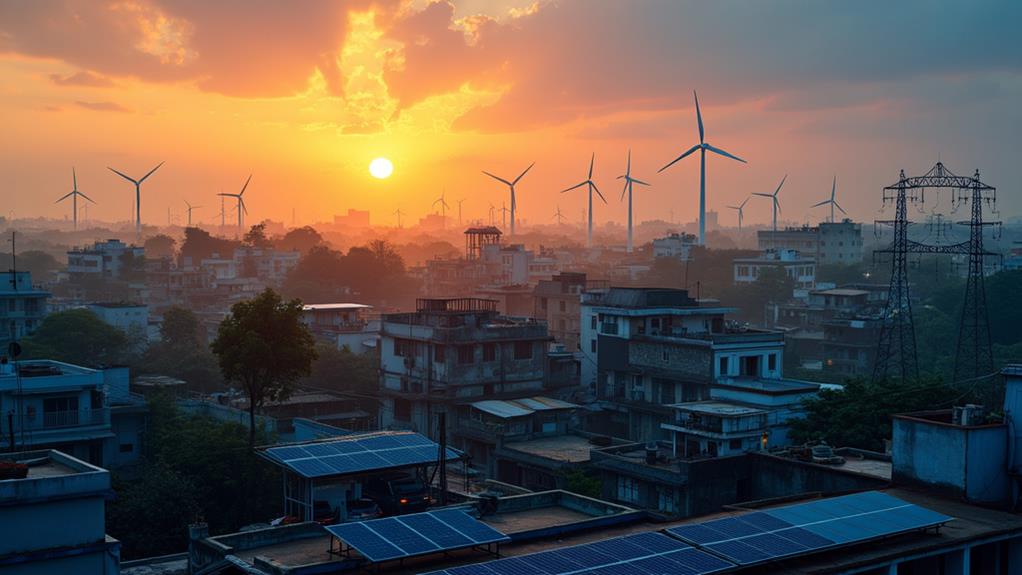
Addressing the root causes of large-scale blackouts requires a multifaceted approach. One major recommendation is the establishment of a smart grid system. This advanced technology enhances grid reliability through better load management and real-time monitoring, reducing the likelihood of future outages. Upgrading outdated transmission infrastructure is also essential. Investing in these areas ensures the grid can handle increasing demand and prevents bottlenecks that lead to blackouts.
Regional energy solutions are equally significant. Decentralized power generation, such as successful microgrid projects in West Bengal, reduces reliance on the central grid. This approach distributes the load more evenly and enhances local energy security.
Systemic reforms are crucial as well. Improving coal supply for thermal plants helps address the supply-demand gap. Better coordination among state utilities is another important step to prevent future disruptions.
Privatization of the electricity sector is another proposed solution. While it can improve efficiency and accountability, it also raises concerns about rising tariffs and job security for current workers. Balancing these factors is necessary to ensure a more resilient and reliable energy future for India.
Lessons Learned
The January 2, 2001, blackout in India starkly revealed the urgent need for comprehensive reforms in the power sector. The incident, caused by inadequate transmission equipment and voltage fluctuations, left 230 million people in darkness for up to 20 hours. This crisis underscored the necessity for robust grid management and monitoring tools to prevent similar failures.
Key lessons from this incident include:
- Investment in Infrastructure: Modernizing aging power infrastructure is imperative. Prioritize investments to replace outdated equipment and enhance energy generation capacity.
- Systemic Reforms: Privatizing transmission and distribution can improve efficiency and accountability. Reforms are essential to address the growing gap between electricity demand and supply.
- Load Management and Coordination: Effective load management strategies and regional coordination among states are crucial for reliable power delivery and to prevent future grid failures.
The blackout was not just a technical failure but a wake-up call for extensive changes. Addressing coal supply issues, enhancing grid management, and implementing systemic reforms will pave the way for a more resilient power sector. Taking these steps can help avert future blackouts and ensure a stable energy supply.

